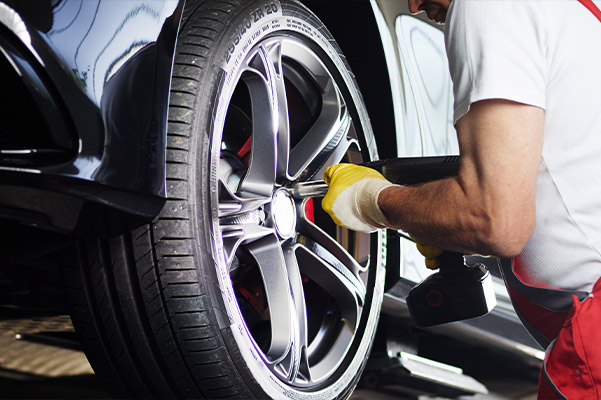Tire Repair Work Myths Debunked: Dividing Fact From Fiction
In the realm of vehicle upkeep, tire fixing holds a significant location, yet it is often shrouded in misconceptions and misunderstandings that can result in complication for automobile owners. Understanding the distinction in between fact and fiction when it concerns tire repair is critical for making sure both security and cost-effectiveness. From the mistaken beliefs bordering patching versus connecting a pierced tire to the effectiveness of numerous tire sealers, there are several crucial locations where clarity is needed to make educated decisions. Let's clarify some typical tire repair work myths and separate them from the reality to empower you with the expertise needed to navigate this important facet of lorry upkeep.
Usual Tire Repair Misconceptions
Resolving prevalent false impressions surrounding tire repair work is essential for maintaining road security and prolonging the long life of your vehicle's tires. It is necessary to understand that not all punctures are developed equal; while some might undoubtedly need a tire replacement, the bulk can be securely repaired.
An additional misunderstanding is the idea that a DIY tire repair work set is an adequate option for all tire issues. While these kits can be handy for momentary repairs in emergencies, they are not a permanent service and may not attend to the underlying trouble (tire shop near me). Seeking the experience of a qualified tire professional is constantly advised to ensure the safety and security and stability of the tire

Can You Fix a Punctured Tire?
Repairing a pierced tire is a typical practice in the automobile market, frequently carried out by professional specialists following particular guidelines and standards. Leaks located on the step area of the tire are normally repairable as long as they are within a certain dimension limit and do not affect the tire's structural integrity.
It is necessary to keep in mind that punctures near the sidewall or shoulder of the tire are generally not repairable as a result of safety problems. Such areas undergo substantial stress and flexing, making repair services unreliable and possibly harmful. Furthermore, if the puncture is too huge, exceeding the advised repairable dimension, or if the tire reveals signs of internal damage, it is much safer to change the tire altogether.
The Reality Regarding Patching Vs. Plugging
When taking into consideration the repair of a punctured tire, recognizing the differences between patching and plugging is vital for making notified choices concerning tire maintenance and security. Covering entails fixing the tire from the inside, where a patch is applied to cover the slit. This approach is thought about more reliable and long-lasting as it addresses the damage inside, reducing tire shop near me the danger of air leakage and additional tire damage. On the other hand, connecting is a fast solution that includes inserting a rubber plug into the punctured location from the exterior. While connecting is hassle-free and can be done without getting rid of the tire from the rim, it is normally considered a short-term option and may not supply the very same level of durability as a spot.
Misconception: All Tire Sealants Are Effective

When selecting a tire sealer, think about elements such as the size of slits it can properly repair, compatibility with tire pressure monitoring systems (TPMS), and whether it is risk-free for the tire material. Checking out evaluations and seeking suggestions from specialists can assist you make an informed decision. Additionally, normal upkeep and timely replacement of sealant can help ensure ideal performance. Remember, while tire sealers can be beneficial in emergency situations, they are not an alternative to correct tire care and maintenance.
Finest Practices for Handling Apartment Tires
In light of the differing efficiency of tire sealers, comprehending ideal practices for taking care of level tires is vital for keeping road safety and car performance. Loosen up the lug nuts, increase the vehicle with the jack, remove the lug nuts and level tire, and replace it with the extra tire. Store away the level tire, tools, and devices, and remember to examine the spare tire's pressure regularly.
Verdict
Finally, it is necessary to separate reality from fiction when it pertains to tire repair misconceptions. Understanding the fact regarding patching vs. plugging, the efficiency of tire sealers, and best methods for managing blowouts can aid ensure the security and longevity of your tires. By disproving common mistaken beliefs and following appropriate fixing standards, you can make enlightened choices when it involves keeping the health and wellness of your car's tires.